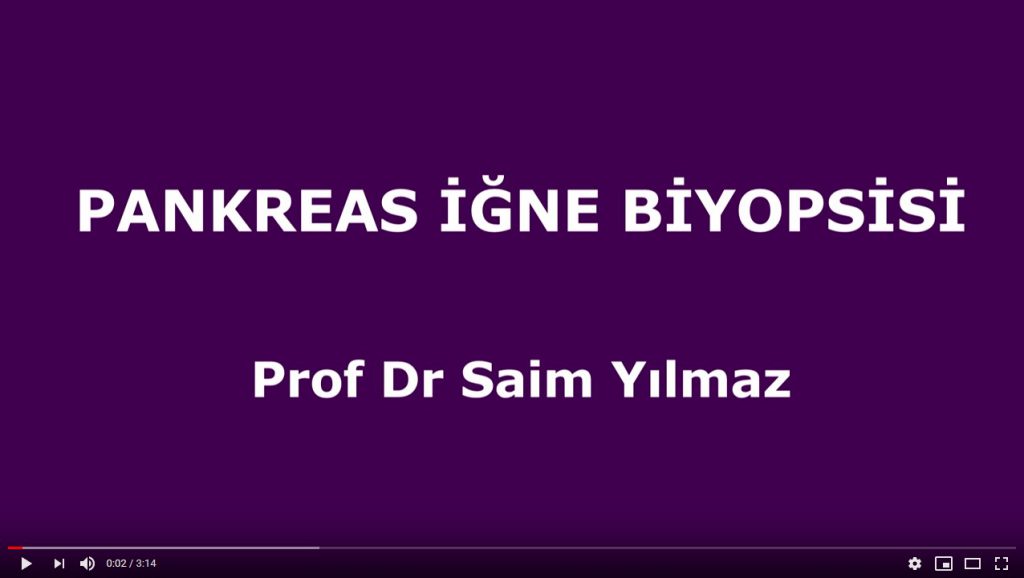Pancreatic biopsy is a form of biopsy that is actually quite easy, but is reluctant to do it because of some risks. These risks, which are often exaggerated, can be listed as bleeding, passing the needle through the intestine, and seeding the tumor, which is also highly exaggerated. There is a risk of bleeding due to pancreatic biopsy, but the risk of serious bleeding is only about 1% in experienced centers, and in such a case, the bleeding vessel can be easily closed by embolization (occlusion of the bleeding vessel in angiography) without the need for surgery. Passing the biopsy needles through the small intestine does not usually cause a problem, but it is usually possible to biopsy the pancreas without entering the intestines under the guidance of ultrasound and tomography. As in all needle biopsies, there is a risk of seeding tumor cells in the pancreas biopsy, but in many studies, this risk has been found to be only one in ten thousand. In conclusion, contrary to popular belief, pancreatic biopsy is a low-risk and high-accuracy (over 90%) biopsy method when done properly.

Pancreatic biopsy can be performed under ultrasound or tomography guidance. The imaging method should be preferred with whichever the mass is seen better. For biopsy, a guide needle is first advanced to the mass in the pancreas, and then multiple biopsies are taken from the mass with a thinner cutting biopsy needle. Care should be taken that the guide needle does not pass through the vessels around the pancreas, the large intestine and, if possible, the stomach and small intestine. For this, it is important that these structures are well visualized in tomography and ultrasound. In experienced hands, pancreatic biopsy is a safe and painless procedure that can be completed in about 10 minutes.
In many centers in our country, needle biopsy is not performed for the pancreas, instead, biopsy is taken by surgery. This situation is explained to the patient that both biopsy and surgery will be done at once. However, pancreatic surgery is a serious operation with a 5% risk of death and a risk of serious complications of around 30-40%, and it only provides benefits in 15% of patients with pancreatic cancer. In other words, if a biopsy is performed surgically in a patient with a suspicious mass in his pancreas and the result is benign, the patient will have completely unnecessary surgery. Even if the mass is cancerous, there is a 85% chance that the patient will not gain any benefit from the surgery, but will have to endure the risks and difficulties of the surgery. For this reason, surgical biopsy should only be used as a last resort in cases where needle biopsy cannot be performed in pancreatic masses.


